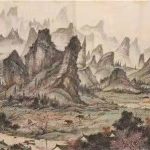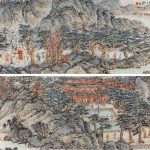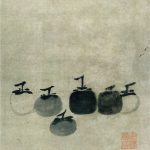Compromising Spirit of Lingnan School of Painting
By; CHEN Ye (Ph.D. candidate at Graduate School of Chinese National Academy of Arts; assistant research fellow at Guangzhou Academy of Fine Arts)
On the Innovation and Transcendence of Contemporary Shan Shui Painting from the Compromise Spirit 折衷精神 of Lingnan School of Painting 岭南画派
By; CHEN Ye (Ph.D. candidate at Graduate School of Chinese National Academy of Arts; assistant research fellow at Guangzhou Academy of Fine Arts)
Modern Chinese Painting Revolution
This is a movement that Chinese painting related to the word “change” in the twentieth century. The modern transformation of Chinese society has brought about the predicament of the traditional Chinese painting which has been handed down for thousands of years under the vision of modern society. Guangdong—“as the birthplace of China’s democratic bourgeois revolution, Western factors are the catalysts in the process of Lingnan cultural transformation”[1]-In art, there is a force of change: Gao Jianfu 高剑父(1879—1951), Chen Shuren 陈树人(1884—1948) and Gao Qifeng高奇峰 (1889—1933) took the lead in raising the banner of “political revolution” and “art revolution” in the modern Chinese painting world, has rapidly changed the pattern of Chinese culture and art, leading Chinese art into a new era of transformation from tradition to modernity.[2] This power has had a profound impact on Chinese painting, including Shan Shui painting 山水画, in the 20th century, and some scholars even consider it as a catalyst for the transformation of Chinese painting.[3] Lingnan School of Painting岭南画派 , led by the pioneers of Gao Jianfu, Chen Shuren and Gao Qifeng, jointly explored and transformed the new face of Chinese painting along with art pioneers in other areas of China. The transformation of Shan Shui painting reached its peak during this time as well.

The founders of the Lingnan School of Painting have a broad mind about art. They, especially Gao Jianfu, proposed the way to change the new Chinese painting, and “compromise” 折衷 is the core: as he said in his book My View on Modern Chinese Painting
《我的现代国画观》: “For painting, it is necessary to compromise the strengths of the arts of the ancient and modern, arts of the Chinese and foreign, and reform it with innovation, so as to meet the needs of a realistic new Chinese painting, epitomize the essence of the world from ancient to modern.”[4] Gao Qifeng and Chen Shuren also agreed with this.
Huang Zhijian 黄志坚[5] summarized the characteristics of the Lingnan School of Painting as follows: 1. Advocating “art revolution” and establishing “modern Chinese painting” as its purpose; 2. Compromise the arts of Chinese and the West, integrating the essence of ancient and modern arts; 3. Taking both form and spirit as the ideal, both elegance and popular appreciation; 4. fusing of fine brushwork 工笔 and freehand style写意, and equal emphasis on colour and ink. In my opinion, the third and fourth points of the characteristics are generalizations with the context of the current era. The former includes the changes in artistic aesthetics during the transformation of the modern society, and the latter summarizes the creative tendency of works at that time – interest in colour, while Lingnan School of Painting has experienced changes in social forms and development of aesthetic standards, and has gradually acquired a richer and multi-layered appearance. The purpose of the “art revolution” is “modern Chinese painting”. After the “modern Chinese painting” was gradually established, the original intention was expanded to the exploration of innovation, which still brought progress to the development of Chinese painting. Among the characteristics of the Lingnan School of Painting, what has always been implemented to this day should be the concept of “Compromise Spirit” (2nd characteristic above), and this is also the essence of the spirit of the Lingnan School of Painting.
“Compromise spirit” was able to condense into an emerging force at that time, enabling fellow and followers to discuss innovative art and truly reflect the spirit of the times. It can be seen that the pioneers of Lingnan School of Painting had advanced artistic views. The core of the “Compromise Spirit” is analysed following in two aspects (from content and form)
New Content – The Spirit of the Times
“The emergence of a new force in the painting world is beyond reproach. Is it true that our national skills will not change for thousands of years?” Gao Jianfu pointed out the importance of the time quality of art. He opposed being complacent. He encouraged painting from life and expressing the reality of modern themes and urban life, especially emphasizing “painting motivation”: “in the turbulent era of the 20th century, if your works can’t have relations with the country, society and the people, they will be eliminated by the times. “; “Painting is to represent the times and progress with the times. “Gao Jianfu led to paint the things of reality, the new era, such as bridges, cars, dilapidated buildings, even airplanes and artillery, he brought many new things from society to light in Shan Shui painting. Guan Shanyue关山月 (1912-2000), Li Xiongcai 黎雄才(1919-2001) and Lin Fengsu 林丰俗 (1939-)have been exploring how Shan Shui painting can express the country’s new life and show the spirit of the times. The contents of these new things were not found in the creation of traditional Chinese painting. Therefore, when Gao Jianfu’s The Flames of the Eastern Battlefield《东战场的烈焰》 (1932) appeared, it could be imagined how strong of a shock was generated.
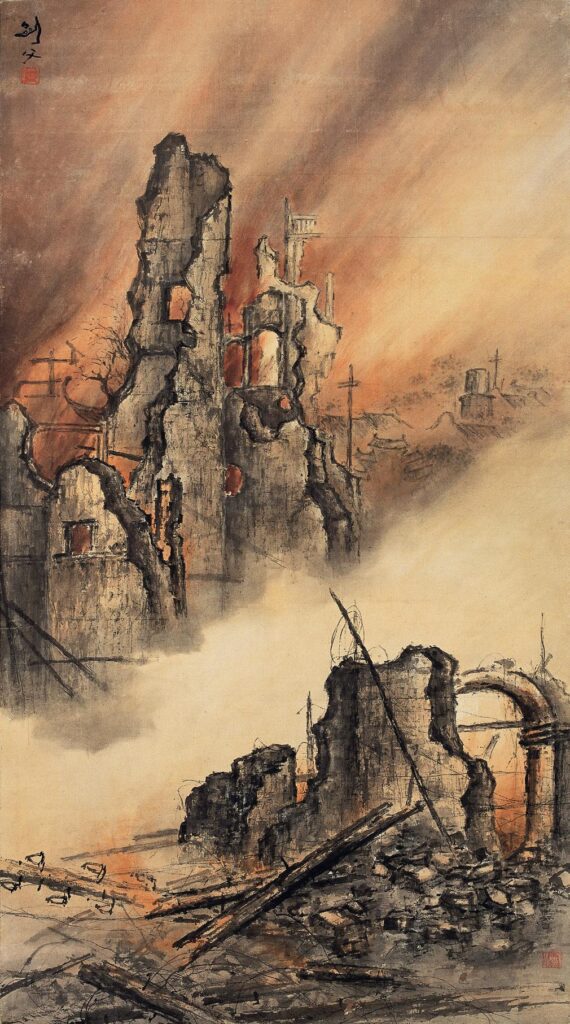
In the painting, the remnant walls and chaotic scenes of the library after Japanese bombing showed not only the situation of society at that time, but also a deeper level of emotion and national spirit during that time. “We should take representation of the national spirit as the order and make the new Chinese painting a national art.” “It seems that the style of new art must be reported most faithfully in accordance with the inherent spirit of the east, indicating the most reasonable spirit of mutual love and mutual assistance among human beings, and to the extreme peak of the beauty of human life.” This is the spiritual core pursued by Lingnan School of painting in the content of creation. Under the guidance of this spirit, the followers of Lingnan School have produced many excellent works, which have achieved many masterpieces in the history of Chinese Art: Guan Shanyue’s Newly Highway《新开发的公路》 (1954),
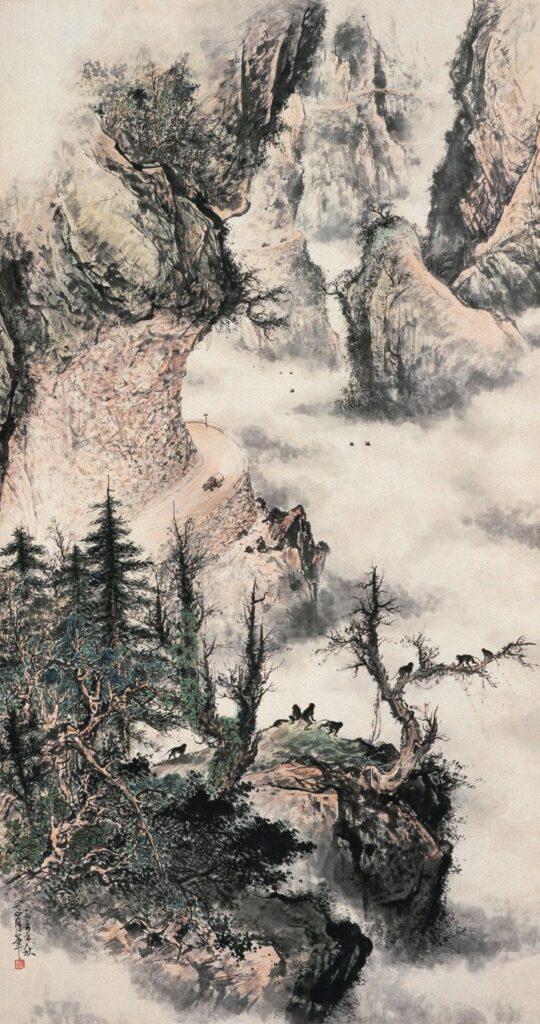
Li Xiongcai’s Flood Prevention in Wuhan《武汉防汛图》(1956) showing the spiritual outlook of the characters in the new era.
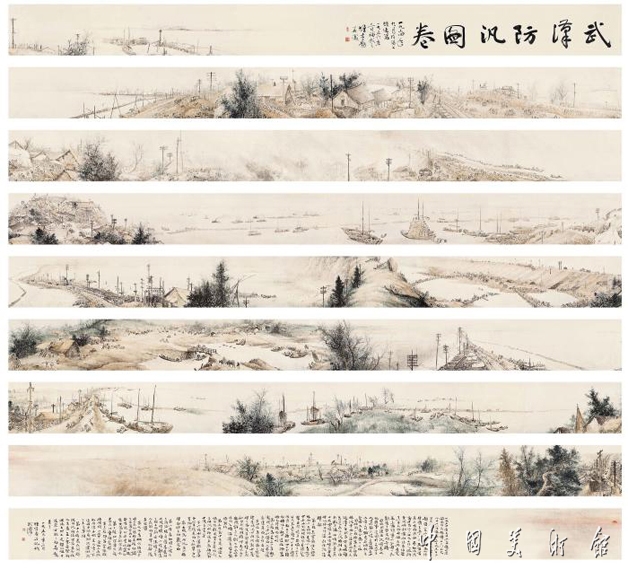

New Method – Compromise from Tradition and West
The “combination of Chinese and Western painting” is Gao Jianfu’s method to explore the new Chinese painting. However, it needs to be treated dialectically. He does not agree with the total westernization, and he also opposes “giving up all the western painting and holding the “old brand”(ancient traditional painting)”. Therefore, compromise is the key point. What is the compromise? How does one compromise? This is what artists need to think about. And Gao Jianfu gave the answers below: 1. Broad vision; 2. Comprehensive performance. He often emphasizes in his manuscripts that the vision should not be limited to Western Europe, but should be extended to all kinds of Arts in the world, such as India, Egypt, and Persia. “If they have any advantages, you should absorb and adopt, turn it into the nutrition of Chinese painting.” In his “fifteen-year-plan” (including the “ten-year-plan”), he also fully reflected his broad vision of various arts. This kind of broad vision can make the expressions of “compromise spirit” have a solid foundation. As Gao Jianfu wrote, “Learning from ancient and foreign countries in art is an important principle for reforming Chinese painting”. For the performance of the new Chinese painting, Gao Jianfu explored the expression of “compromise” from the aspects of theme, atmosphere, tone, material, composition and subjects. From the works of the pioneers of Lingnan School of painting, it is not difficult to feel their new representation, unique composition, emotional atmosphere and so on. Their exploration has influenced later followers. For example, Guan Shanyue and Li Xiongcai created new composition models, and Yang Zhiguang 杨之光 (1930- ) combined the techniques of watercolour and oil painting with traditional Chinese painting.
However, “The new Chinese painting (new Shan Shui painting) does not need formalism at all”. What the Lingnan School of Painting advocates is not simple techniques or styles that followers have been embracing and creating rich artistic features with, but their original intention of innovation and the concept of compromise. “With the spirit of traditional Chinese painting and the scientific techniques of Western painting, this school of painting can win a lot of sympathy in the art world.” Compromise spirit really opened a new chapter in the exploration of new Chinese painting.
Inheritance and development
Gao Jianfu was far-sighted. He had high hopes for Lingnan School of Painting, and this high hope is with a development perspective, he said: “In the 20th century, science has progressed, transportation has developed, and the cultural scope has expanded from the country to the world. Painting also expanded to the world. I hope that this new Chinese painting will become the painting of the world.” Their followers did not fail to live up to this expectations, they passed it on with practical actions. In this process of inheritance, the spirit of Lingnan School of Painting has also developed. How to combine the spirit of the times and expressive techniques, to explore them dialectically is a difficult problem faced by the followers, and it is also the current and future goal of Lingnan School of Painting. How should they practice the problem of the “Compromise Spirit”?
Before discussing this issue, let’s take a look at the contemporary inheritance of Lingnan School of Painting. After the founding of the People’s Republic of China, some followers of Lingnan School of Painting continued to create their art in various regions overseas, and insisted on passing on its spirit. Many teachers and educators have made followers spread all over the world. In the meanwhile, Lingnan School of Painting in Guangdong Province was exploring new Chinese paintings, it also set up apprentices. Among them, Fang Rending方人定 (1901-1975), Guan Shanyue, Li Xiongcai and other generations of artists inherited the spirit of Lingnan School of Painting. Many of them developed not only in Guangdong, but also all over the country. A big branch inherited by artists such as Guan Shanyue and Li Xiongcai was closely combined with Guangdong art education through Guangzhou Academy of Fine Arts 广州美术学院(formerly known as mid-south academy of Fine Arts中南美术专科学校). The spirit of Lingnan School of painting has been continuously carried forward with great achievements. Nowadays, a number of outstanding Guangdong artists active in the Chinese art scene are from this academy: Chen Jinzhang陈金章(1929- )
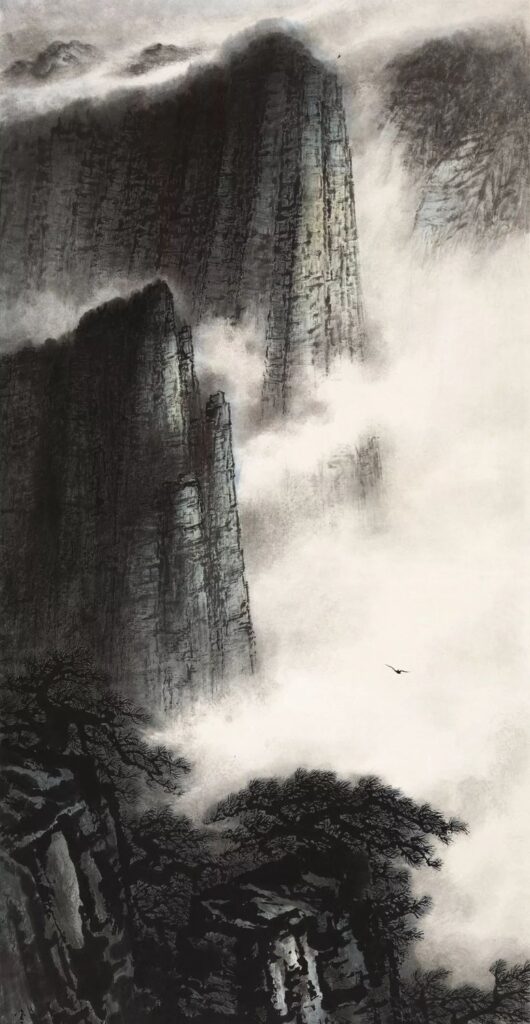
Liang Shixiong梁世雄(1933-), Fang Chuxiong方楚雄 (1950-), Chen Yongqiang陈永锵, Zhang Zhian张治安, Liu Shumin刘书民(1942-), Chen Xinhua陈新华, Su Baijun苏百钧(1951-), Li Jinkun李劲堃(1958-), Zhu Yongcheng朱永成,

Fang Chuqiao方楚乔(1953-)etc.

Their creations have different styles, diversity and is unique. It is precisely these artists who demonstrate the spirit of Lingnan School of painting with practice.
Here are some examples: Chen Jinzhang, Liang Shixiong, and Lin Fengsu paid attention to paint from life and depict the rivers and mountains of the motherland, created a series of masterpieces showing the new style of the times — Harbour Morning《海港早晨》, The Early Snow in Zaoyuan《枣园初雪》, Common Holidays 《公社假日》 (1972) etc.
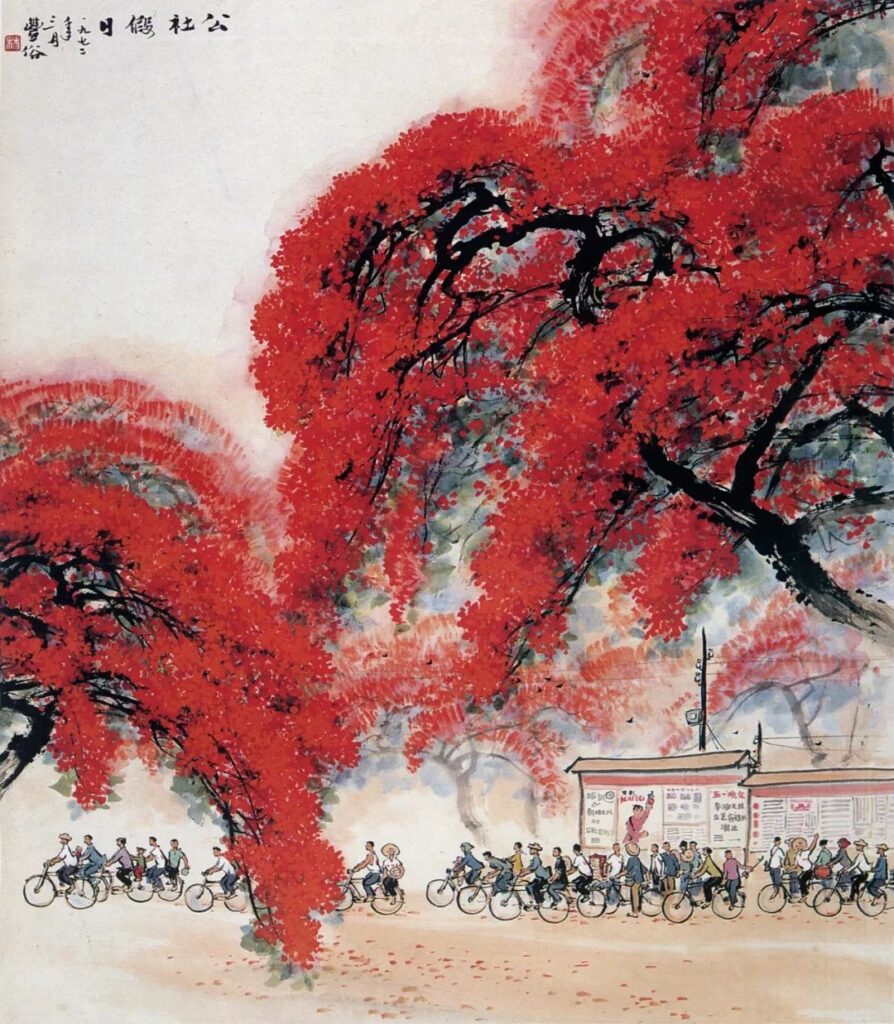
they used new visual languages to express their understanding of the simplicity of life, and expressive angles full of life. They established a new form of Chinese painting. On the way of innovation of traditional Chinese painting, these artists show a strong flavour of life, which is based on the internal transformation of local culture. Each of them has a new expression of “compromise” giving the “compromise spirit” a deeper connotation.
The overall aesthetic characteristics of the Lingnan School of Painting is precisely the word “change”. Under the guidance of the “compromise spirit”, the artist insists on inclusiveness and innovative practice. They practice by themselves and use their creation to show the spirit of the new era. Artists who have inherited the spirit of the Lingnan School of Painting, teach and educate people, and pass it on. Huang Zhijian believes that the Lingnan School of Painting is a kind of “ism”, not a model[6]; Wei Chenghong 韦承红 also said in her book that Lingnan School of Painting is “more like a trend of thought, a kind of -ism”[7]. From the above, it can be seen that what Lingnan School of Painting inherits is a spirit, and this spirit is still meaningful today.
What is the significance of the spirit of the Lingnan School of Painting in the present and future development of Chinese painting? We may be able to get a glimpse and get inspiration from a group of contemporary artists who have inherited the spirit of the Lingnan School of Painting and their creations:
1. Thinking of change:
Chen Zhenguo 陈振国 once mentioned his views on the compromise between Chinese and Western techniques in an interview: “I have always admired some scholars in the period of the Republic of China. They not only have a solid foundation in traditional culture, but also can look at the world to absorb the rich nutrition of Western culture. I think that traditional artistic techniques and modern modelling concepts can be well combined.”[8] Chen Zhenguo’s thinking about “compromise spirit” is deep-seated, thinking about the differences between Eastern and Western cultures. In addition to the differences in the expression methods, he hopes to observe the world with the idea of “equal to the same kind”. This is precisely the reflection of the current era. The exchange between China and the West has begun to reverse the western-input and established a platform for dialogue in the context of the world. The artists of Chen Zhenguo’s generation reflect the thinking in the context of this era. A group of his creations about Europe, Australia, Korea and other places also reflect this trend of thinking. The “ordinary heart” of Chinese and Western cultures can be said to be a contemporary development of the spirit of “compromising Chinese and Western”. China and the West have begun an equal dialogue, and the development of Chinese painting should also be on this equal platform. And this is also the speculation of “change” and “compromise” in the context of the current era.
2. Foreign knowledge to serve China
Li Jinkun’s 李劲堃 Shan Shui paintings show a unique artistic conception and have a modern visual aesthetic tension. Works such as The Twilight of the Desert《大漠之暮》(1989)
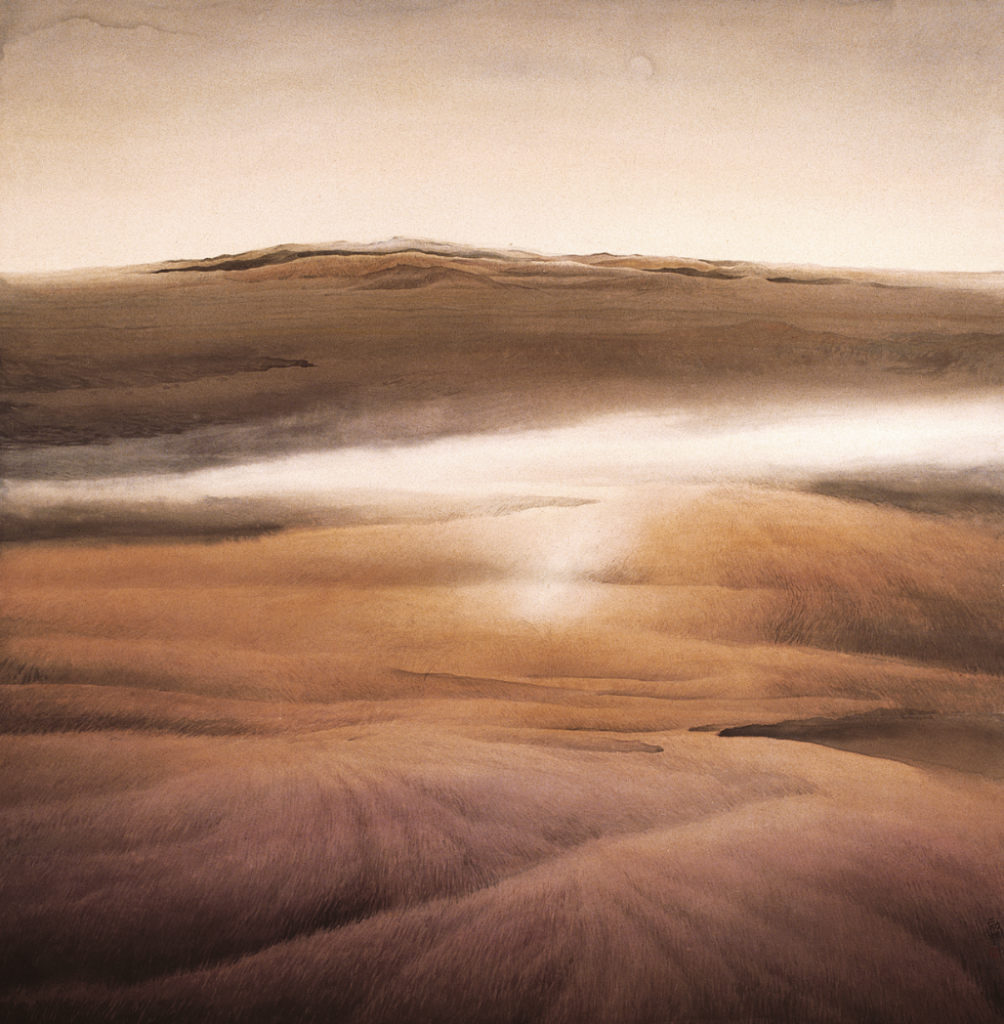
and Frosty Dawns 《霜天晓雾》

have changed the traditional perspective of Shan Shui paintings, bringing the expressive perspective and aesthetics of Western painting. He has been adhering to the artistic propositions and spiritual ideas of the Lingnan School of Painting, and this inheritance has developed and evolved in his understanding. From learning and absorbing Western art, to focusing on the improvement of expressive techniques, and then he realized that “to make foreign knowledge serve China, we must take root in tradition, and at the same time, we can get rid of the tradition”[9], this process of comprehension of the “Compromise Spirit” also reflects the understanding of different levels of Chinese culture, a reflection of cultural confidence and the spirit of the times. “Adhering to the Chinese culture, adhering to artistic ideals, strengthening cultural self-confidence, and persisting in innovation”[10] is the current development path of New China. The guidance of the spirit of the Lingnan School of Painting has opened up new horizons for the artistic development of Chinese cultural revival.
3. The expansion of Chinese culture:
There are many examples of the young generation of artists who innovate and develop from their own national culture. Such as Yu Li’s 于理 (1972 – ) creation focuses on the delicate emotions between Chinese characters of different ethnic groups in their own cultural context. Her works are exquisite and full of tension. She especially likes to decorate delicate and complicated accessories and clothes. In her special research on the techniques and colours, she radiates the feelings and beliefs in the spirit of the characters, in order to develop an aesthetic of Contemporary meticulous工笔 figure painting. On the other hand, Chen Peng陈朋, who also got inspiration from the South-West ethnic minorities, expressed his artistic features in a different way. He explored freehand style写意with a high inspiration in his ink and brush creation.
Li Jinkun believes that “change” is the eternal theme of art, and also the best inheritance of the innovative spirit of the predecessors of Lingnan School of Painting.[11] “Change” takes the spirit of compromise as the path, and the future of art development requires local culture as the emotional creative motivation to be valuable. The above-mentioned inheritors of the Lingnan school of Painting all reflect their concern and associate their own culture with their works. It is this emotional foundation that makes their works become classics. Under the guidance of the compromise spirit, how should the younger generation of artists explore creation that reflects the spirit of the times and based on local culture? Nowadays, some artists are trying to advance with practice. They have the courage to make breakthroughs and look for new artistic language: some artists seek “changes” in experimental ink painting and modelling, or express the modern emotions of urban living beings. The entangled identity consciousness and self-spirit mapping gives artistic creation a more universal value. Under the international vision of the global community, some artists have expanded the dimensions of creation, and their works have taken a new leap; some artists have broken the boundaries of painting, conveyed the value orientation of ideas from images, deepened the ideological value of creation, and presented the creation expressively with ideological depth.
Afterthought: Innovation and Transcendence
Gao Jianfu’s “modern concept of painting” and the compromise spirit of Lingnan School of Painting were born in the early twentieth century when Chinese society was facing tremendous changes, but this does not mean that his artistic concept and guiding spirit belonged only to the last century. At that time, they were facing the modernization transformation of traditional art. They absorbed nutrients from foreign art theories and concepts, and carried out painting changes in the “form” and “idea” of painting. These concepts are dialectical. Even if the art of painting has developed far, and has completed the modernization transformation, it does not mean that the spirit of the Lingnan School of painting needs to exit the scene. On the contrary, the founder of Lingnan School of painting, headed by Gao Jianfu, has great artistic ideals and far-sighted artistic vision, which makes the compromise spirit have the characteristics of keeping pace with the times. This spirit can still reflect the guiding significance of innovation and development with the development of the times.
Contemporary artists have “compromise spirit” from the beginning of their concepts. Their compromise and fusion transcends regionalism and timeliness. Looking back on the spirit of Lingnan Painting School along the way, what must be affirmed is the influence and positive attitude of the spiritual guidance of it. “We feel that the wheels of the times are constantly being launched and rotated. Today, we have reformed and created. We will soon become obsolete. New methods and new theories will emerge. At that time, we will reform it again, recreate it again, we will always revolutionize and create forever, so that we can evolve forever.”[12] This spirit of never slackening and always “innovating” is the driving force for the continuous advancement of artistic creation, and the inclusive and compromise approach has a broad perspective. Many studies define the Lingnan School of Painting as the aesthetic characteristics of the times and geographic area. This is biased. What they inherit is not a technique or style, nor a similar aesthetic or visual pursuit, but a creative spirit of innovation and change. The current value and significance of the spirit of Lingnan School of Painting is a spirit that goes beyond the school, and this spirit should be valued. This is the quality of innovation and transcendence in contemporary painting.
Read the article from the magazine
[1] Chen Jichun:Fusion of Chinese and Western New Art, Nanjing Normal University, 2002. 陈继春:《融合中西新艺术》,南京师范大学,2002年
[2] This view comes from the exhibition “Dawn-The Transformation of Guangdong Chinese Painting in the Early 20th Century”(《曙色——二十世纪前期广东中国画变革之路》 , Lingnan School of Painting The memorial岭南画派纪念馆, March 2017.
[3] This view is quoted from Li Jinkun’s李劲堃 interview in the exhibition “Dawn of Light-The Road to Change in Guangdong Chinese Painting in the Early 20th Century”“曙色——二十世纪前期广东中国画变革之路” .
[4] Gao Jianfu’s Poems and Essays,(《高剑父诗文初编》) Compiled by Li Weiming(李伟铭), Guangdong Higher Education Press, 1999, P262-263. Note: All the citations below are from this book if they do not mark quotations.
[5] Huang Zhijian (1919-1994), born in Guangzhou, Guangdong. In 1940, he graduated from the Hong Kong Academy of Fine Arts and the Faculty of Arts of Lingnan University. After the founding of the People’s Republic of China, he engaged in art history research and flower-and-bird painting creation, good at Chinese painting and art theory. Served as vice president and art consultant of Guangzhou Academy of Painting. His works include Characteristics of Lingnan School 《岭南派的特征》
[6] Huang Zhijian: On the Characteristics of the “Lingnan School of Painting”, Research on the Lingnan School of Painting, Volume 1, Edited by the Lingnan School of Painting Research Office, Guangzhou Academy of Fine Arts, Lingnan Art Publishing House, 1987. (黄志坚:《论“岭南画派”的特征》,《岭南画派研究》第一辑,广州美术学院岭南画派研究室编,岭南美术出版社,1987年)
[7] Wei Chenghong:Lingnan Painting School, Liaoning Fine Arts Publishing House, 2003, P21. (韦承红:《岭南画派》,辽宁美术出版社,2003年)
[8] Chen Zhenguo:External Picks-Collection of Chen Zhenguo’s Works, 2012.
[9] Wang Yunan,Mo Fei: Li Jinkun: A Lingnan Painter with Both Tradition and Contemporary Development, Collection Auction,2015, Issue 5.(王于楠、莫非:《李劲堃:一位传统与当代并进的岭南画家》,《收藏拍卖》2015年第五期)
[10] Excerpts from an interview with Li Jinkun, reported by Nanfang Daily, September 26, 2019.(李劲堃采访摘录,《南方日报》2019年09月26日报道)
[11] Excerpts from an interview with Li Jinkun, reported by Nanfang Daily, September 26, 2019.
[12] Gao Jianfu’s Poems and Essays, Compiled by Li Weiming, Guangdong Higher Education Press, 1999.


